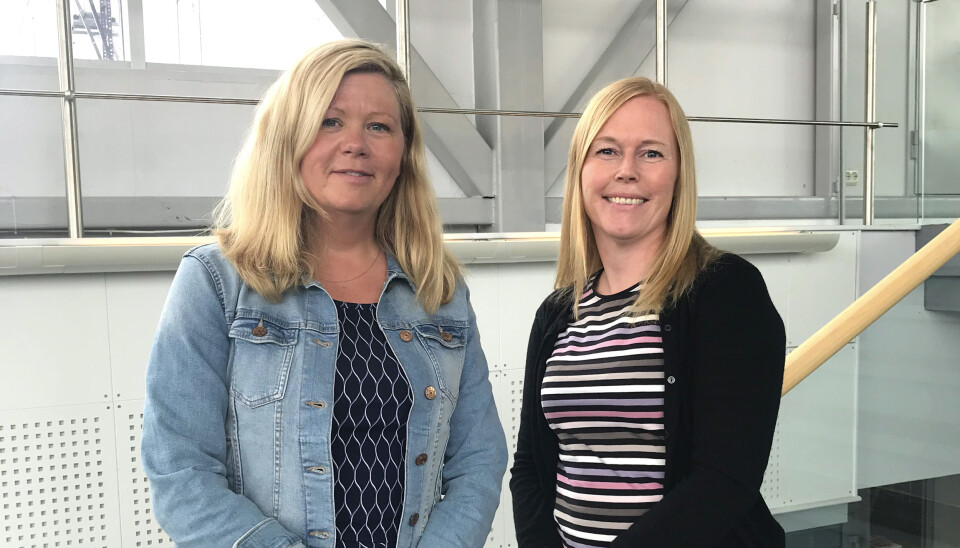This article was produced and financed by Norwegian centre for E-health research - read more

Health workers got the hang of video during corona situation
Health workers in Norway experienced that video meetings worked well in communication with both patients and partners. But there were some bumps in the road.
When the corona pandemic hit Norway in March, the infection control restrictions led to reduced opportunities for a traditional follow-up of patients.
Health personnel in primary care and hospitals had to communicate digitally by phone and video.
For many health professionals, it was a new experience to use video conferencing for patient care. They were concerned about how an abrupt transition to digital follow-up would affect the person-centered focus, which is especially important for patients with complex needs that come with diagnoses such as cancer, diabetes or dementia.
A patient-centered focus is to understand what is important to the person. The wishes of the person shall, as far as possible, be the starting point for all plans made.
The corona situation motivated health workers to plunge into unknown waters.
“They had to think new to follow up the patients. Video meetings were the only opportunity for collaboration when national infection control measures were to be followed”, explains researcher Gro-Hilde Severinsen at the Norwegian Centre for E-health Research.
Together with colleague Line Silsand she has investigated how health workers in Northern Norway responded to having to do things differently.
Best suited for coordinating actions
Although the technology was challenging and they had little experience with video conferencing in clinical practice, most health professionals thought they did surprisingly well.
They emphasized that although video conferencing worked well, the channel was best suited to follow up on known patients and to coordinate measures for the patient between, for example, hospitals, GPs and physiotherapists.
For example, if the patient is to have physiotherapy on Tuesdays and have a meeting with the GP on Wednesday, the home care service must arrive early so that the patient is ready when the taxi is waiting to leave. Furthermore, the patient can not go to the day center that day, so the appointment must be moved to Friday. The patient may also need follow-up in hospital for one or more diseases. This could mean changes in the medication, which must be communicated to the GP and the home care service that is responsible for dispensing the medication. The pharmacy must also be notified.
Physical contact is however still necessary to be able to make a comprehensive clinical assessment and diagnosis of people.
Patient-centered health service teams
“We conducted video interviews with 18 people with a health professional background. We wanted to know if follow-up of elderly patients with complex needs can be performed through digital collaboration, and what the health workers thought about it,” says researcher Line Silsand from E-health Research.
Together with colleague Severinsen, she investigated how they used video consultations at hospitals in Tromsø, Narvik and Harstad and in three municipalities.
Since 2014, the University Hospital of Northern Norway has had a patient-centered health service team, where people from the hospital and the municipal health services collaborate. The Norwegian Centre for E-health Research has done research on this.
The goal is better collaboration across the organization to achieve a patient-centered, holistic and proactive health service. Digital interaction is a tool, but was only tried to a limited extent before the pandemic struck.

Avoid tiring trips
A patient-centered health service is important for people with complex and chronic diseases like cancer, diabetes, COPD, MS and dementia. They need follow-up over several years.
“They are not the disease, it is just a part of everyday life. The goal is that the disease is as unobtrusive as possible. To achieve this, follow-up can take place on video from home or from a local GP office. It saves the patient many tiring trips to the hospital,” says Silsand.
Video worked better than phone
Video conferencing was an unfamiliar way of working, especially for collaborating partners. But the team experienced that with mild persuasion and technological support, they made the health workers use video instead of telephone.
“Most people thought it worked well. Seeing the patient gave a better relationship than on the phone,” says Severinsen.
Patients were given the opportunity to connect to a video conference at home. Thus, the health workers from both the hospital and the municipality could assess them and the living conditions without being physically together. When a relative or nurse attended the meetings, they received additional information about the patient. In hospitals, video conferencing was used to facilitate the person's return to their home. The hospital staff could also talk to the home care service or to relatives if they connected from the patient's home.
Healthcare professionals experienced that it could be demanding to communicate on video with those who, for example, had reduced vision and hearing. The same applied to dementia patients or people who had had a stroke.
“People with cognitive impairment could be excluded from video meetings because it was not thought they would be able to participate,” Silsand says.
Others experienced that video meetings meant that they were able to include persons with serious illness, because they connected from home or the hospital. With the support of relatives or caregivers, patients understood the context where some were digitally present and others physically in the same room.
Better prepared for video
Another experience the informants gained was that when collaboration meetings were done on video, the participants were often well prepared. They were able to discuss and resolve issues faster than in a physical meeting.
“Several had the opportunity to participate in meetings, such as the GP, home care service or the specialist from the hospital when they did not have to travel to the hospital. But many thought video meetings were intense and demanding, and that they should therefore last a maximum of one hour,” says Severinsen.
Forgot to charge, lacked coverage
Some of the barriers to using digital communication are well known. Healthcare professionals have busy days, without much time to learn about using technical equipment.
“In addition, there are a number of different solutions for video meetings, such as Join, Skype, EasyMeeting and Teams. It is difficult to know which ones talk to each other and which browsers work best for the various alternatives,” says Line Silsand.
Health workers take pride in being composed and professional. When they had technical problems, they did not feel as much in control anymore when they communicated with the patient. Connecting audio and video could divert attention from the most important thing: the patient.
When they were going to use video, it was important that the equipment was charged, that there was network coverage and that it worked. If the first interaction went well, there was a greater chance that healthcare professionals and patients would be positive next time.
“Those who received IT support from the team and had time to get to know the equipment did best,” Silsand states.
The health workers got assistance when they put equipment in place, connected it and trained employees - both those in the team and partners. The team experienced that guidance was necessary to continue to collaborate digitally. Many of them were worried that they would have to be "technology support" also in the future.
Need a strategy
Despite a steep learning curve, health workers want to continue with digital communication.
“Many of those we interviewed called for an overall strategy for the use and support of video technology. That strategy does not exist today, but everything indicates that it must be in place for this to become an integral part of the health service,” says Severinsen.
“Our findings show that digital collaboration is a simple, cheap and effective step towards better information exchange in the health service. It can help solve the need for communication and exchange of health data between the actors.”
———



































